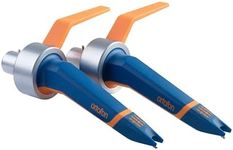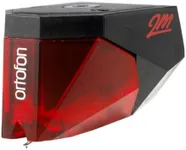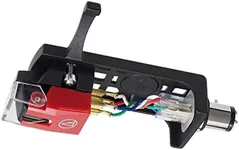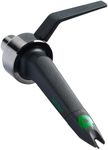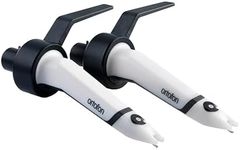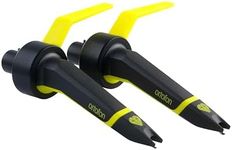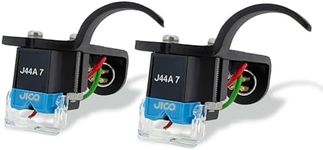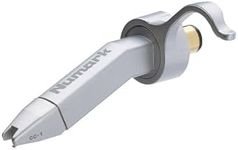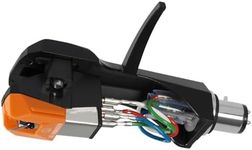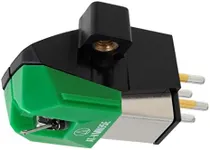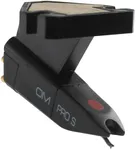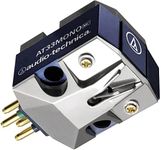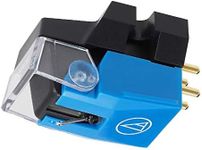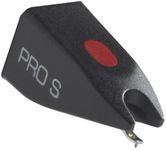Buying Guide for the Best Dj Cartridges
Choosing the right DJ cartridge is crucial for any DJ, whether you're a beginner or a professional. The cartridge is the part of the turntable that holds the stylus (needle) and is responsible for reading the grooves on the vinyl record. A good cartridge can significantly enhance the sound quality and performance of your DJ setup. When selecting a DJ cartridge, consider the following key specifications to ensure you get the best fit for your needs.Stylus TypeThe stylus type refers to the shape and material of the needle that makes contact with the record. Common types include spherical (conical) and elliptical. Spherical styli are more durable and better suited for scratching and back-cueing, making them ideal for hip-hop and turntablism. Elliptical styli provide better sound quality and are preferred for mixing and general playback. Choose a spherical stylus if you prioritize durability and scratching, or an elliptical stylus if sound quality is your main concern.
Tracking ForceTracking force is the downward pressure applied by the stylus on the record. It is measured in grams and affects both sound quality and record wear. Lower tracking force (1-2 grams) is gentler on records and provides better sound quality, but may skip more easily. Higher tracking force (3-5 grams) offers better tracking stability, especially for scratching, but can cause more wear on records. If you are a scratch DJ, opt for a higher tracking force. For general mixing and playback, a lower tracking force is preferable.
Output VoltageOutput voltage is the electrical signal strength produced by the cartridge, measured in millivolts (mV). Higher output voltage (8-10 mV) provides a stronger signal, which can be beneficial in noisy environments like clubs. Lower output voltage (3-5 mV) may require more amplification but can offer better sound fidelity. If you perform in loud venues, a higher output voltage is advantageous. For home use or studio settings, a lower output voltage may suffice.
Frequency ResponseFrequency response indicates the range of frequencies the cartridge can reproduce, measured in Hertz (Hz). A wider frequency response (e.g., 20 Hz to 20 kHz) ensures more accurate sound reproduction, capturing both deep bass and high treble. For DJs who prioritize sound quality and want to ensure their music sounds as intended, a cartridge with a wide frequency response is ideal. If you are more focused on scratching and performance, frequency response may be less critical.
Mounting StyleMounting style refers to how the cartridge attaches to the tonearm. The two main types are headshell-mounted and integrated. Headshell-mounted cartridges are more versatile and can be easily swapped out, making them a good choice for DJs who like to experiment with different cartridges. Integrated cartridges combine the headshell and cartridge into one unit, offering simplicity and ease of use. Choose headshell-mounted if you value flexibility, or integrated if you prefer a straightforward setup.
